Vanity Fair Declares Most Oppressive Look Of The Last Century Totally Feminist
Let's learn some fashion history!
Not everything needs to be feminist. This is not to say that we shouldn't strive to make things be feminist, but rather that we do not need to retroactively declare things that are not feminist or have nothing to do with feminism to be feminist in order to validate liking them.
Some things are neutral. You may, under most circumstances, feel free to buy a couch without thinking to yourself "Yes, but is it a feminist couch?"
Other things are explicitly "not feminist," but we can like or do them anyway because of how we contain multitudes (unless they actively involve the oppression of women in some context), and trying to come up with a context in which they are feminist somehow feminist makes everything weird and exhausting.
Put Yourself First - "Crazy Ex-Girlfriend" www.youtube.com
On Friday, Vanity Fair published an article titled "How Christian Dior Pioneered 75 Years of Feminist Fashion."
I must tell you, dear readers: Christian Dior did no such thing. I have never heard anything so absurd in my life, which is why we're going to go on a little jaunt through fashion history this week (again!) .
One supposes the title of the article was chosen because of how Dior's current creative director Maria Grazia Chiura — who happens to be the luxury brand's first female creative director in its entire 75 year history — likes to slap the word feminist on everything. Like this $860 white t-shirt that says "We Should All Be Feminists" on it, a reference to the title of a book/TEDx talk by Nigerian feminist Chimamanda Ngozi Adichie.
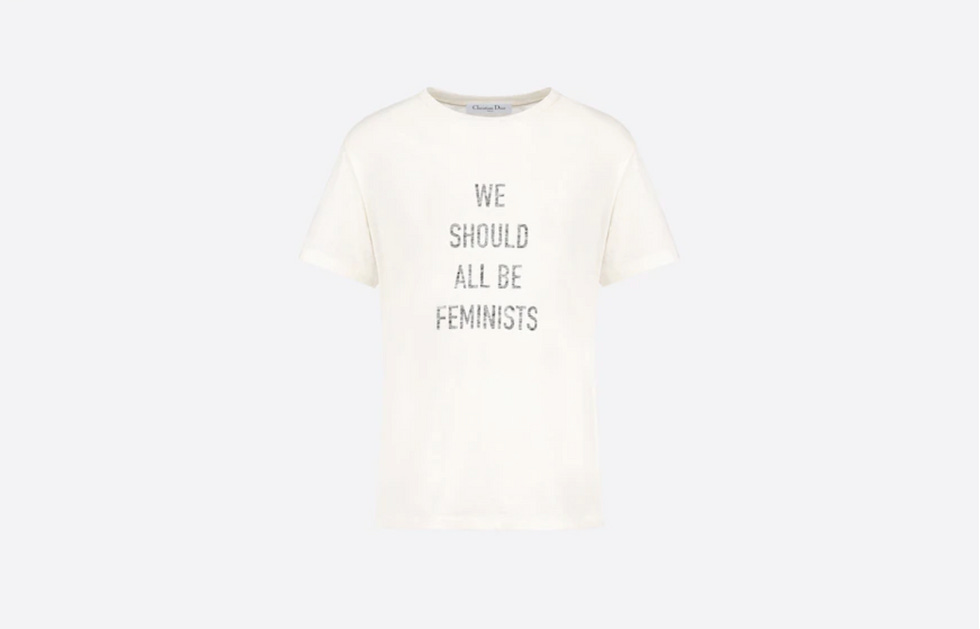
Curiously, for such a big feminist, MGC has yet to jump on the inclusiveness train when it comes to the body type diversity of her runway models (or lack thereof), and she has made a pretty bad habit of cultural appropriation .
At no point does the article actually explain how it was that Christian Dior supposedly "pioneered 75 years of feminist fashion" or even try to make that argument, outside of the headline — which is good because that would be an extremely difficult case to make.
“The first Dior collection in 1947 had a tremendous impact,” says creative director Maria Grazia Chiuri. The original couturier’s designs, Chiuri notes, were instrumental in helping French fashion “reclaim its rightful center spot” following World War II, which ravaged the previously thriving industry. Famously coined the New Look by then Harper’s Bazaar editor in chief Carmel Snow, it was marked by full skirts, cinched-waist silhouettes, and rounded shoulders; a stark departure from more practical wartime dressing.
None of this is technically wrong. Dior's Correlle and Huit lines (what would be called The New Look , due to the fact that it very much stood on its own rather than evolving from current trends of the time) was and remains perhaps one of the most well-known and influential collections of all time. It absolutely helped France regain its spot as the epicenter of fashion and its cultural impact cannot be overstated. But it most certainly was not feminist.
You see, during the WWII, there were two big things that influenced fashion — the fact that women had to go to work and the fact that fabric and other materials were rationed. The former meant that women's clothing became more practical, more comfortable, easier to move around in and exuded a certain strength. The latter meant that hemlines went up and that shapewear was less restrictive as the rubber for girdles and metal boning used for corsets were needed for the war effort. The evolution of fashion at that time seemed to be moving towards more freedom for women, both socially and sartorially.
My personal favorite aspect of 1940s clothing was the big shoulders — a trend which began, no big surprise, with Joan Crawford and a dress designed for her by the famed Hollywood costume designer, Adrian. It was for a movie called Letty Lynton (which you will never get to see because it was determined that the movie basically plagiarized a play called Dishonored Lady — which was later remade as a movie starring Hedy Lamarr, and that you can watch ) and as such, it became known as the Letty Lynton dress.
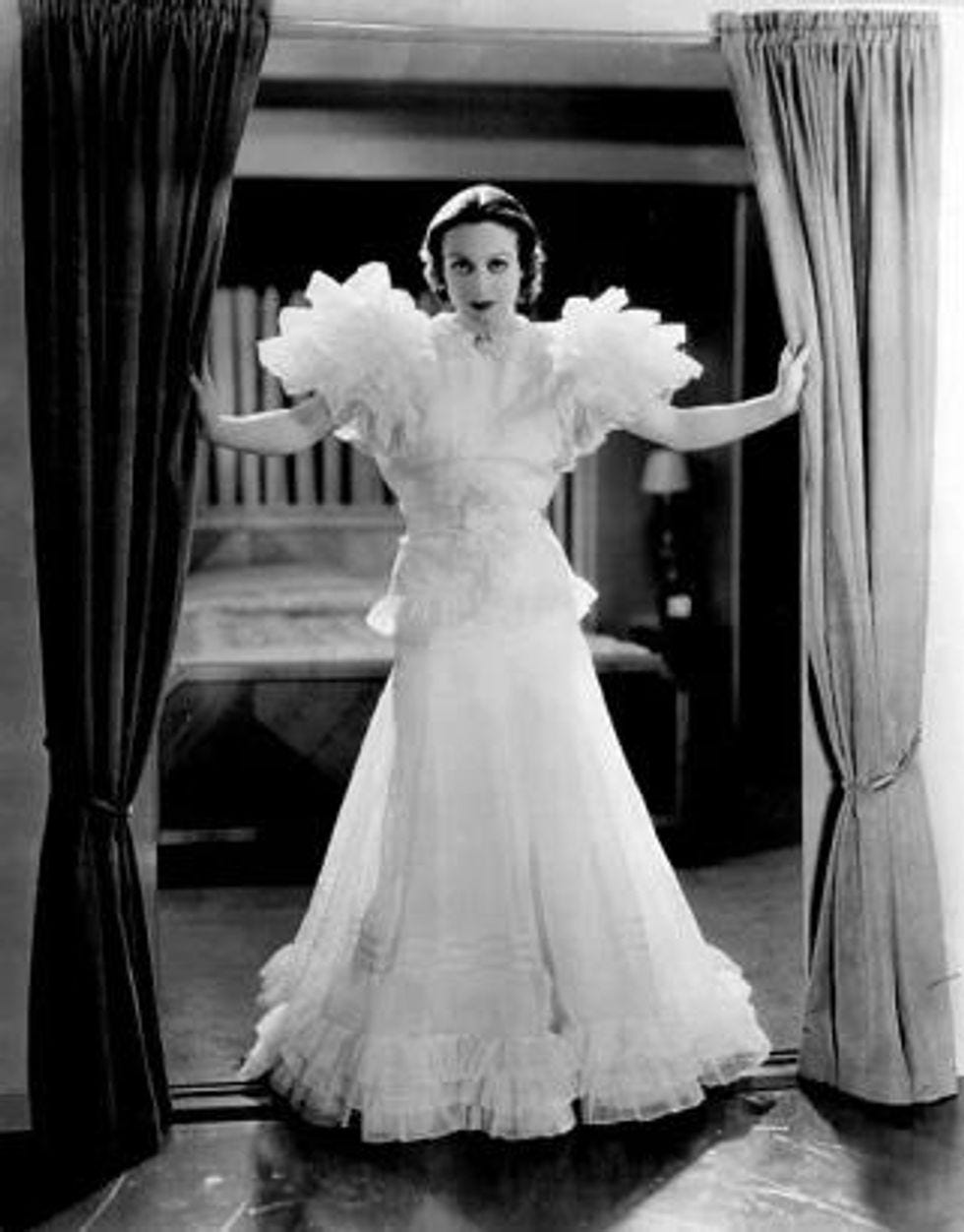
Popular culture at the time also contributed to this ideal. Wonder Woman debuted in 1941, Hollywood made pictures about strong, independent career women — Katharine Hepburn in Woman of the Year, Rosalind Russell in His Girl Friday , Betty Grable in The Shocking Miss Pilgrim — who are not forced, ultimately, to choose between love and their work and are not cast as villains or tragic figures.
But after the war ended, women started getting pushed out of work so that the returning men could take their jobs and be waited on at home by doting housewives. Some were happy to do this, but not all. And that's where the Dior of it all comes in.
Inspired by Edwardian fashion, the work of American designer James Charles and the shape of flowers, Dior's postwar "New Look" incorporated full skirts that were far longer and which used far more material than what women had previously been wearing, along with padding on the hips and cinched waists that required some very intense shapewear to get into — as exemplified by the the Bar Suit (pictured below). Some of the dresses and skirts in his collection weighed up to sixty pounds. The skirt on the Bar Suit alone was made up of 15 feet of fabric.
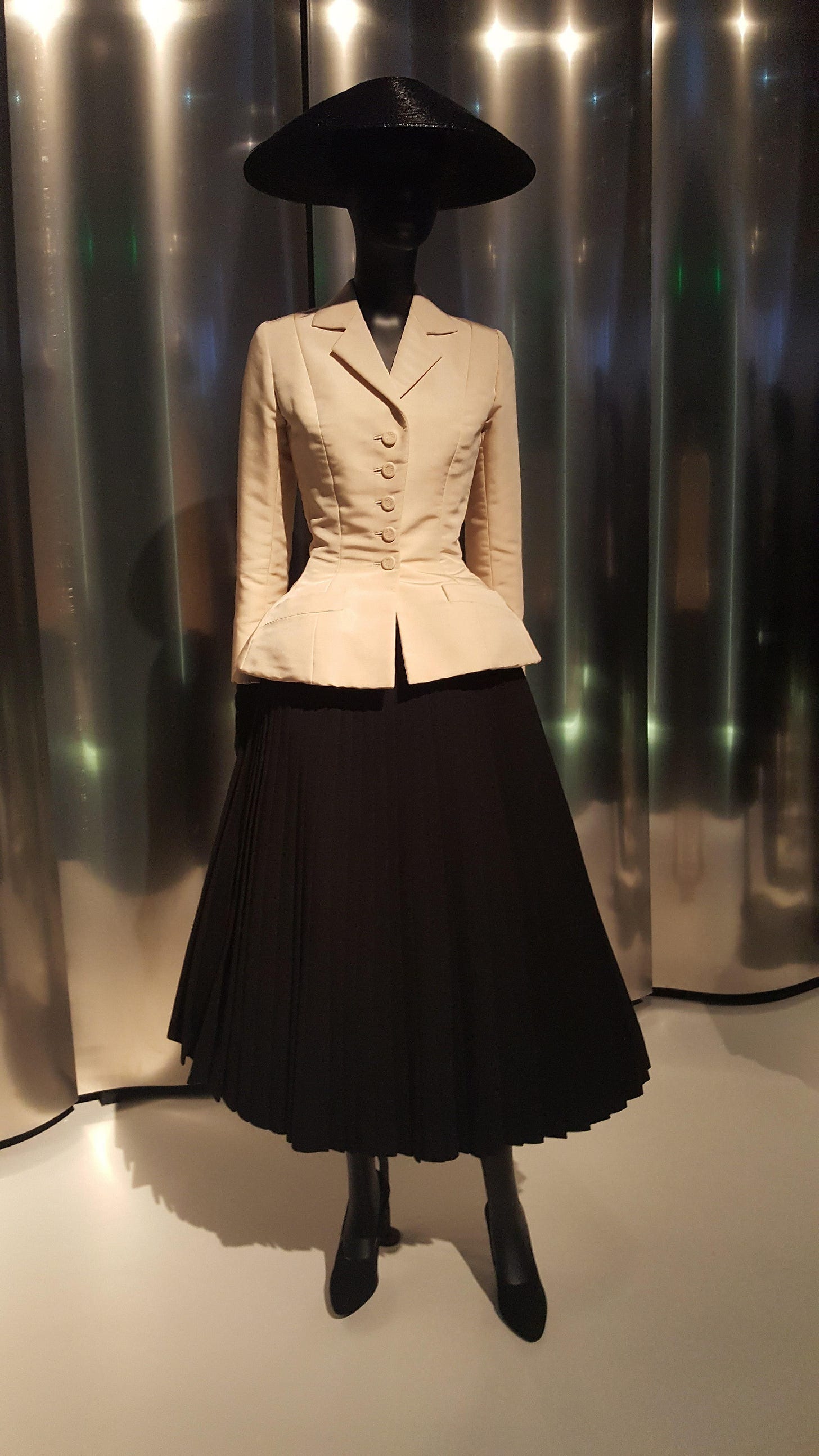
File: Dior denver art1.jpg - Wikimedia Commons commons.wikimedia.org
"I created the flower women with gentle shoulders and generous bosoms, with tiny waists like stems and skirts belling out like petals," Dior said of his creation.
"Dior doesn't dress women, he upholsters them," said Coco Chanel of the same. Chanel was actually so mad about the collection that she eventually came out of retirement and started designing clothes again — which is rather impressive given the fact that she was also probably exhausted from all of the spying she was doing for the Nazis during the war. As a designer, she had long ago abandoned corsetry, invented "the little black dress" and favored simpler, cleaner designs frequently based on menswear.
Many women shared her sentiments. In the United States and Canada, women formed protest groups with amazing names like the Little Below The Knee Club, Women's Organization To War On Styles (WOWS), The League For The Prevention of Longer Skirts For Women and the Lizzie Stone League For The Abolition Of Longer Dresses In Daytime.

Men also protested the New Look, both because they liked looking at legs as well as because all that fabric was expensive as hell — inspiring 30,000 men to join a club called The League of Broke Husbands.
This isn't to say that the New Look wasn't extremely popular, because it absolutely was. Eva Peron was a big fan, as was Princess Margaret, both of whom were frequently dressed by Dior himself.
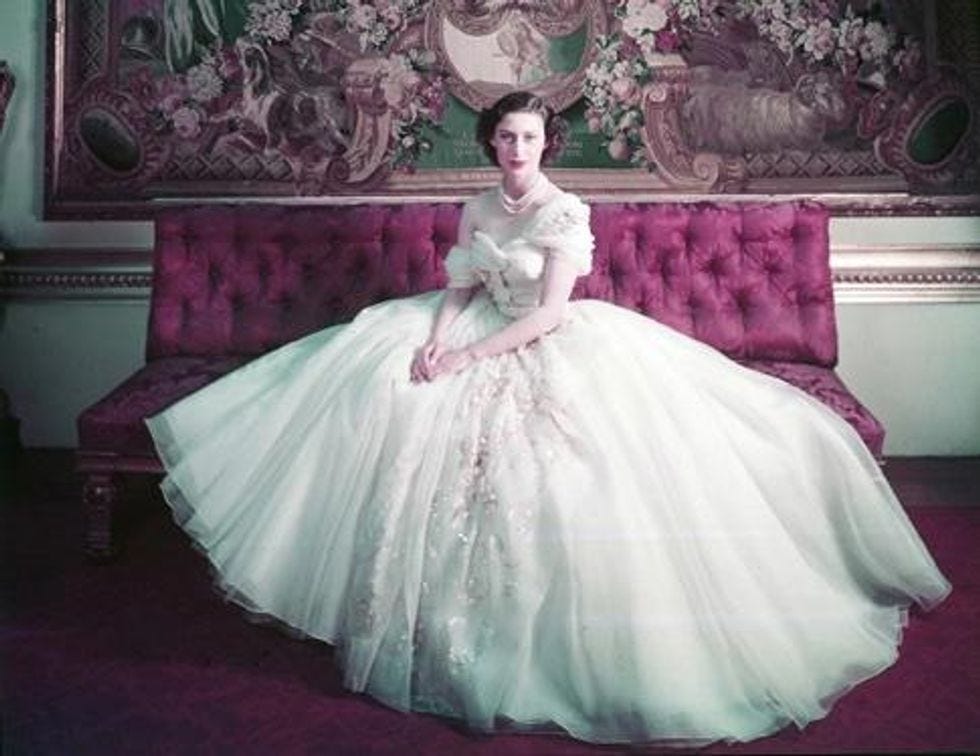
Princess Margaret in her favorite Dior gown
The silhouette eventually prevailed and became the look most associated with the 1950s and early 60s. Well, one of the looks most associated with the 1950s anyway. In 1954, at the age of 71, Coco Chanel came out of retirement to debut the Chanel suit as a response to Dior's froufrou, wasp-waist look. “It enables women to move with ease, to not feel like they’re in a costume. I’m not changing the attitude of mannerism. This time, it’s very different because human body is always on the move,” she said of the iconic look.
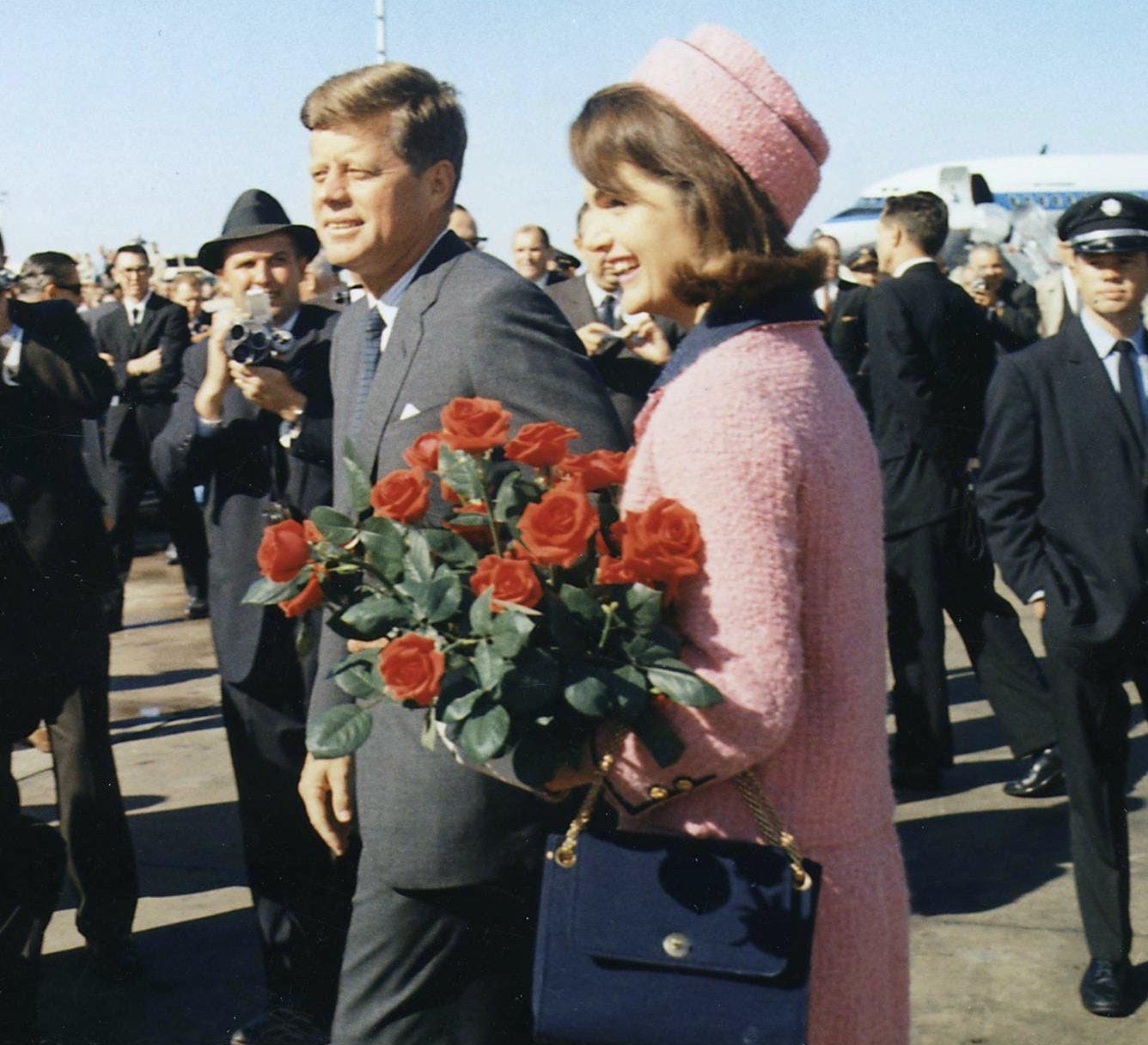
File: Kennedys arrive at Dallas 11-22-63 (cropped1).JPG - Wikimedia ... commons.wikimedia.org
Chanel, though a Nazi sympathizer, was correct in this regard: the dresses were not easy to move in or to wear without incredibly restrictive undergarments. You weren't exactly going to be able to swan around an office in one, at least not without knocking a few things over. They were also difficult to fit into if you had any kind of muscle tone, which is partly why it is easier for women of today to wear 1940s vintage clothing than to wear 1950s clothing of this style. Women in the 1940s were working and just by virtue of that had stronger arms. In the 1950s, much of the exercise for women was exclusively about whittling the waist (hula hooping was popular) and burning calories but not gaining muscle. As much as we associate the 1950s with fuller figures, most women, particularly middle to upper class white women, at that time had very tiny arms and tiny waists and that was what was required to fit into these dresses. More explicitly — you pretty much had to be a 1950s housewife in order to really be able to rock The New Look.
At the same time, popular culture was also working to push women back to the home. While a few movies — notably Adam's Rib , starring Katharine Hepburn and Spencer Tracy and Johnny Guitar starring Joan Crawford — featured "career girls" or otherwise strong women, many new movies depicted women who had careers they cared about as damaged, corrupt, leading lives of empty despair or in need of rescuing by a man who will show her that what she really wants is to stay at home and have babies, while depicting stay-at-home wives and mothers as happy and content. Similarly, the celebrity journalism at the time was heavily focused on how much the female stars of the day really enjoyed being homemakers and taking care of their husbands and children when they weren't making movies.
Still, the New Look wasn't quite as ubiquitous as we imagine — if you look at actual pictures of actual people in the 1950s as opposed to movies, advertisements or fashion plates, you'll see just as many if not more A-line skirts, pencil skirts and wiggle dresses or circle skirts that were full but not that full. This is at least partly because not every woman in America at that time went and became a housewife. As in earlier eras, poorer women, particularly women of color and immigrants, still worked.
Dior was hardly the only reason the 1950s sucked for women, but it sure as hell didn't help anything and it certainly wasn't feminist in any regard. It's just one of the many ways in which popular culture at the time gently nudged women out of the workplace and back into the kitchen. It's no coincidence that women's liberation coincided with the rise of the miniskirt, courtesy of Mary Quant and André Courrèges, or that as women increasingly gained power during that period, other designers tried and failed to bring back midi-skirts and dresses. Or that, eventually and ironically, Yves Saint Laurent — a former creative director for Dior himself — would invent the women's pantsuit in 1967.
None of this means that Dior's New Look was not gorgeous or that the style is not extremely influential even to this day (some might even say that about half of MGC's work for Dior has been endless variations on The New Look) — but it sure as hell wasn't feminist.
OPEN THREAD!
Do your Amazon shopping through this link, because reasons .
Wonkette is independent and fully funded by readers like you. Click below to tip us!



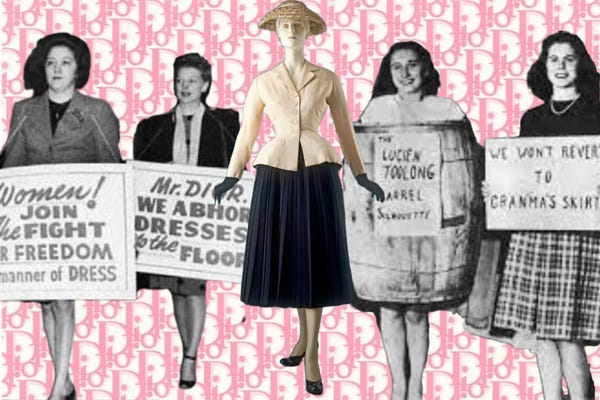
Sure, but the massive amounts of packaging required for meds to treat the resulting raging yeast infection aren't.
Gotta keep that constant watch so they know exactly when Jesus comes back.